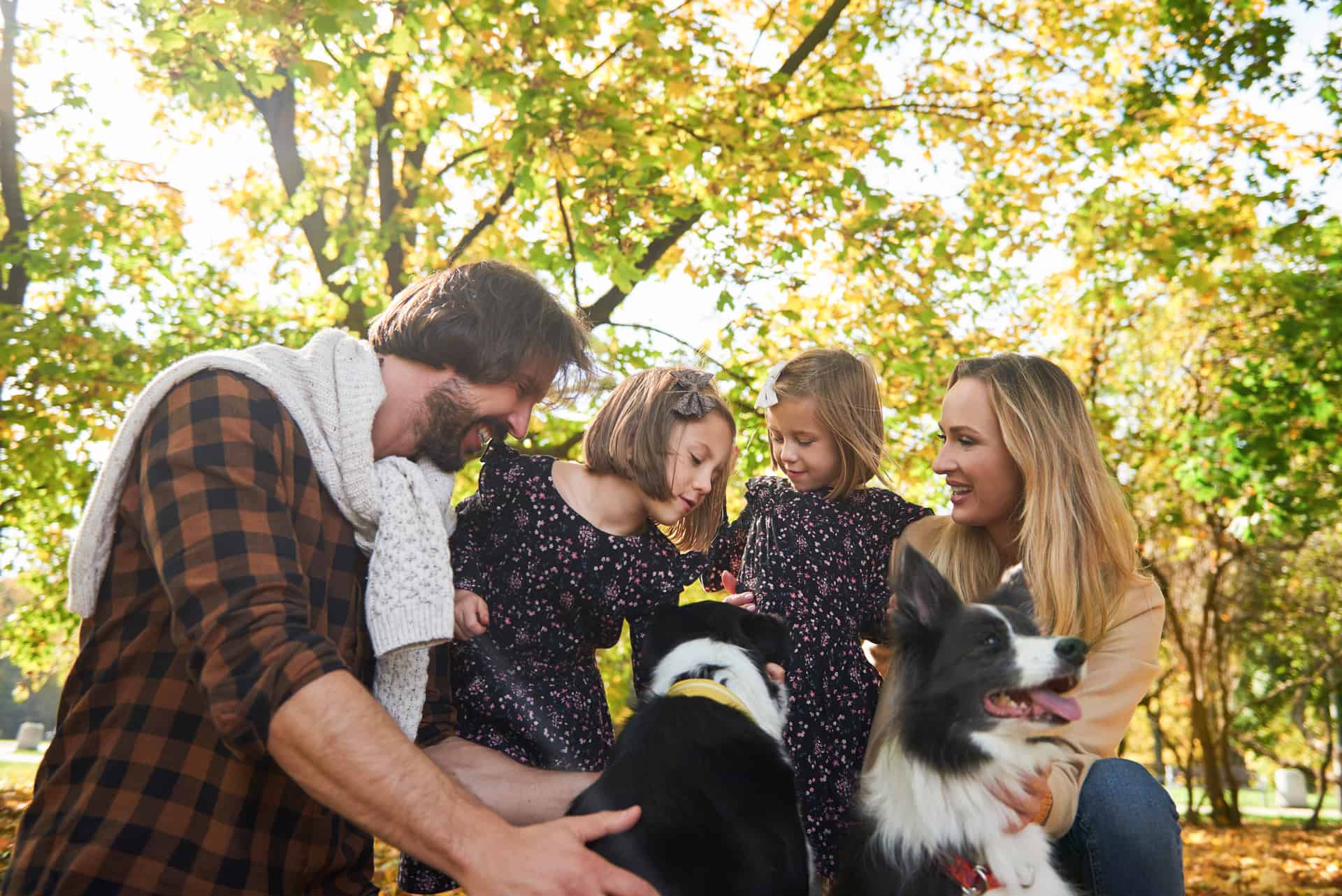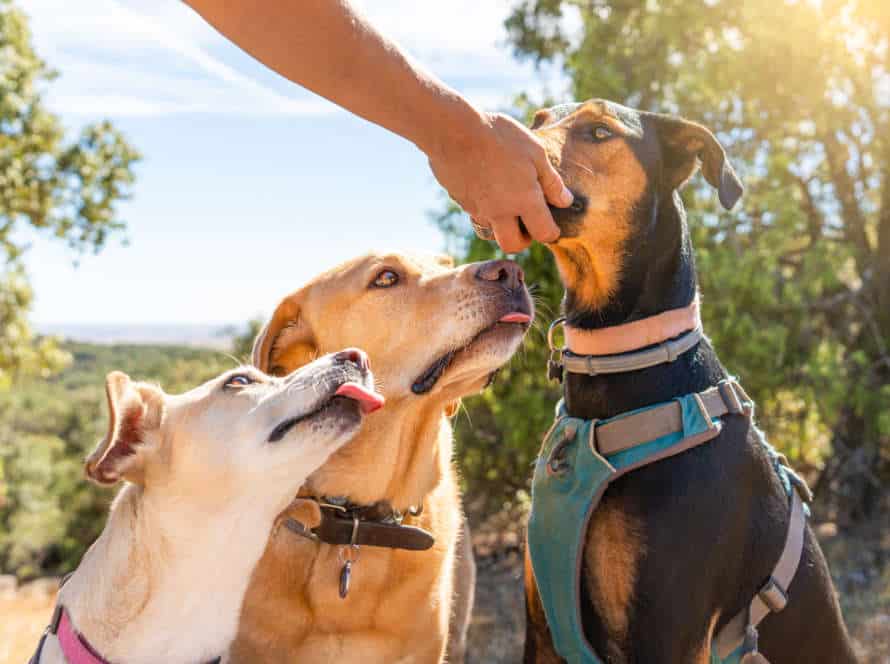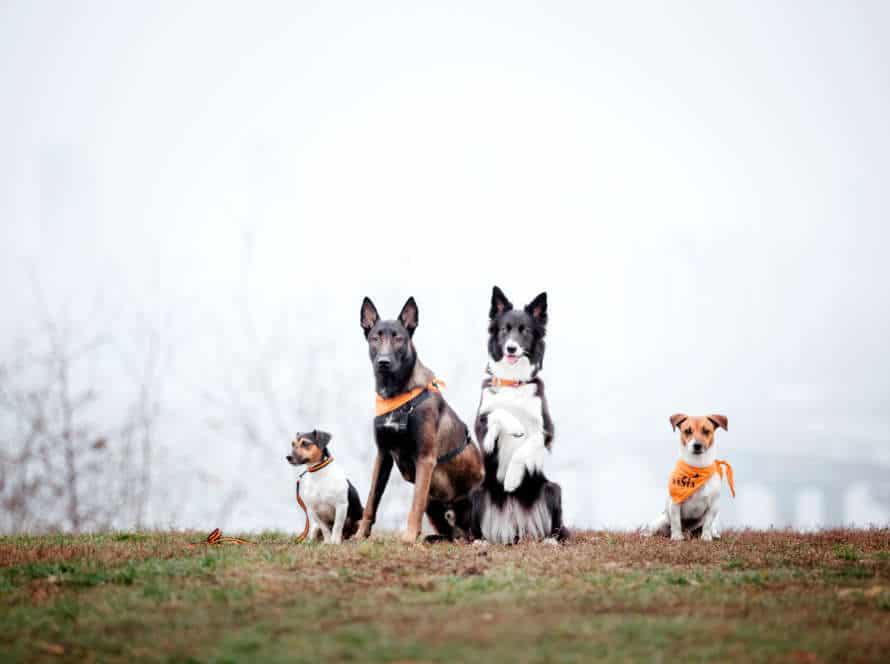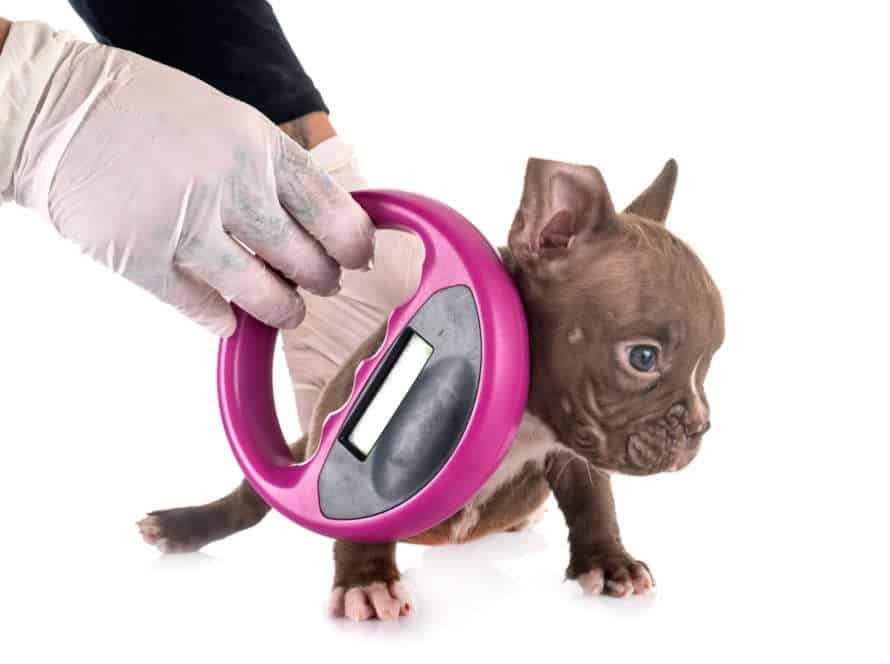Understanding High-Energy Dogs
High-energy dogs can be a joy to own. But, they can also be tough to train. It’s important to know their particular needs and how to manage their energy. This article will discuss the training and management of high-energy dogs. So, busy owners can have a well-behaved, cheerful pup!
Breeds that are considered high-energy
High-energy dogs require daily exercise, mental stimulation, and attention from their owners. Some of these breeds include:
- Border Collie: This breed is smart and has a lot of energy. They need exercise, training, and a job to stay content.
- Australian Shepherd: These dogs are playful and have a herding instinct. They need daily exercise and training to avoid bad habits.
- Jack Russell Terrier: This type of dog is energetic and has a high prey drive. They need exercise, mental stimulation, and attention.
- Siberian Husky: These dogs have lots of energy and stamina. They need daily exercise and a job to stay happy. They are also smart and independent, making training difficult.
- Dalmatian: These athletic, energetic dogs require daily exercise and mental stimulation to prevent boredom and destructive behavior. Socialization and training from an early age is essential too.
Training for high-energy dogs can be tough, however it is necessary for the wellbeing of these breeds. Pro Tip: High-energy breeds are often great running buddies, agility competitors, and working dogs.
The importance of training for high-energy dogs
Training is essential for high-energy dogs. It helps burn off energy, stops destructive behavior and strengthens the bond between pet and owner. These dogs need lots of physical and mental stimulation. Without proper training, they can become restless, anxious and destructive.
Training sessions give dogs an outlet for their energy. They also help them focus, provide structure and routine. Busy owners can use training to manage their high-energy dogs. Teach basic commands like “sit,” “stay,” and “come.” This will help you control your dog and stop unwanted behaviors.
Plus, training sessions are quality time to build a strong relationship.
So, if you have a high-energy dog, consider regular training sessions in your routine. This will help manage behavior and strengthen your bond.
The benefits of training for high-energy dogs and their busy owners
High-energy dogs need more exercise and training than other dogs. Busy owners must make time for this. Training brings benefits to both the pup and the owner.
For the pup, it helps manage behavior issues, builds socialization skills, and promotes good health.
For the owner, it saves time, reduces stress, and promotes bonding.
Pro tip: Enroll your pup in a training program or hire a professional trainer. This is especially helpful for busy owners who can’t devote enough time to training.
Training Techniques for High-Energy Dogs
High-energy dogs need a special way of training. Consistency counts when teaching active doggos. Commands, rewards, and expectations must be kept the same. Knowing the pup’s needs is also important. Here, owners of energetic pups can learn various methods to help teach commands.
Positive reinforcement training
Positive reinforcement training is a great way to train high-energy dogs. Instead of punishing bad behavior, reward the good! Whenever your pup does something you want it to repeat, like sitting or coming when called, give it praise and a reward like a treat or toy. This reinforces the connection between the behavior and the reward, making your pup more likely to do it again.
If your pup misbehaves, don’t punish them. Redirect their attention and teach them what you want instead. With consistent rewards for good behavior and ignoring bad behavior, you can train your pup to be obedient.
Pro Tip: Consistency is key! Make sure to reward good behavior every time it occurs. Use the same commands and rewards so your pup doesn’t get confused.
Physical exercise techniques
High-energy dogs need regular physical exercise to stay happy and healthy. Here are some useful training techniques to help busy owners meet their pup’s exercise needs.
- Interval Training: Alternate between high and low-intensity exercise periods. Like, a jog followed by a relaxed walk, or a game of tug-of-war followed by some obedience training.
- Agility Training: Use obstacles like weave poles, jumps, tunnels for physical exertion plus mental stimulation. This is great for pups who love a challenge.
- Fetch: An excellent way to expend your dog’s energy. Buy a fetch toy and have fun with your pup for 20 minutes each day.
- Swimming: A low-impact, high-intensity exercise for those with joint problems or mobility issues. If you have a pool or live near water, teach your dog how to swim.
Pro Tip: Keep it interesting. Vary locations, times and exercises – this will help your pup stay engaged and motivated.
Mental exercise techniques
Mental exercises are key for training high-energy dogs. Stimulating them and channelling their energy into positive behaviours. Here are three techniques to try:
- Hide and Seek – Start by hiding behind a door or under furniture. Increase the difficulty as they get better.
- Teach new tricks – Teach your dog to spin or play dead. It’s a great way to exercise their mind and release energy.
- Puzzle toys – Fill a puzzle toy with treats and let them figure out how to get them out. It’s a great way to stimulate their problem-solving skills.
By using these mental exercises regularly, you can create a well-rounded and well-behaved canine companion, even with a busy schedule.
Training Tips for Busy Owners
Got a pup with tons of energy? It can be a great addition – or a real challenge – for busy owners. Ensure your active pup gets the physical and mental exercise they need to stay healthy and happy. Here’s a few tips to help you train and manage your pup with a demanding lifestyle. Let’s go!
Scheduling training sessions
When training high-energy dogs, scheduling training sessions is essential – especially for busy owners. Here are some tips to make the sessions effective:
- Set a routine. Have it at the same time each day when your pup has the most energy.
- Keep it short. Attention spans are short so limit to 15-20 mins daily.
- Be flexible. If you’re busy, fit in sessions when you can. Shorter & more frequent are better than long & occasionally.
- Use positive reinforcement. Reward good behaviour with treats, toys or praise to keep them motivated.
- Stick to the plan. Consistency is key, so stay patient. Your efforts will pay off, and your dog will become more obedient.
Incorporating training into everyday activities
You don’t have to spend loads of time and energy to train your high-energy pup. Incorporate training into your everyday activities instead! Here are some tips:
- Begin with basic commands like ‘sit’, ‘stay’, and ‘come’.
- Use mealtime to practice commands before giving them food.
- Make use of your daily walk by working on loose-leash walking or recall training.
- Teach tricks during play, like fetch or frisbee.
- Use feeding toys, like puzzle feeders, to help your pup learn to problem-solve.
- Keep training sessions short and enjoyable to keep your pup and yourself happy.
Hiring a professional dog trainer or enrolling in doggie daycare
If you own a high-energy dog, it can be tough. A professional dog trainer can help. They can work with your dog individually and create a plan. Plus, they can teach you how to communicate with your pup. Group classes are also offered. This is where your pup can mingle with other dogs and learn obedience skills.
Doggie daycare is another option. Here, your pup can play and socialize with other dogs in a secure environment. This will tire them out and stop bad behavior at home.
The decision is up to you. Your budget, schedule, and what your dog needs should all be taken into account. Speak with a professional to figure out the best solution for you and your pet.
Common Training Problems & Solutions for High Energy Dogs
High-energy dogs can be a challenge! They can make a mess, destroy stuff and cost you money. Training them may seem scary, but understanding their behavior and having a good plan can help. Let’s look at some common training issues and what to do about them.
Destructive chewing and jumping
High-energy dogs often have destructive chewing and jumping issues. Training and patience can help! Here are some tips for busy owners:
- Destructive Chewing:
- Give your pup lots of chew toys.
- Watch ’em when not in crate or designated chewing area.
- Start with short confinement times, then increase.
- Jumping:
- Turn away when they jump, to avoid reinforcing.
- Teach ’em to sit & stay before visitors arrive.
- Reward good behavior with treats & praise.
- Be consistent!
Pro Tip: A well-trained pet is a happy pet. Invest time in training to benefit you both.
Excessive barking and digging
High-energy dogs often have issues with excessive barking and digging. But no need to worry! With a few simple solutions, you can train your pup to break these bad habits and have a peaceful home.
Begin by figuring out what triggers your dog’s barking. Then, in a controlled environment, expose him to the triggers and reward him for good behaviors. Re-directing his attention to a toy or treat can also help.
Digging is usually caused by excess energy. Make sure your pup gets plenty of physical activities like walks and playtime. Provide a special area in your yard for him to dig, or give him mental and physical stimulation through puzzle toys.
The key to training high-energy dogs is consistency, patience, and positive reinforcement. Every pup is different, but with time and effort, any bad behavior can be corrected!
Running away and pulling on leash
Owners of high-energy dogs often experience running away and leash pulling. Here are some tips for managing these behaviors:
- Running Away:
- Provide supervision when outdoors and ample exercise and mental stimulation indoors.
- Teach and practice a reliable recall command in low-distraction environments.
- Utilize a long training leash to practice recall in open areas.
- Pulling on The Leash:
- Use a front-clip harness or head halter to deter pulling and provide more control.
- Immediately stop walking when your dog pulls and wait till they come back to your side.
- Use positive reinforcement to reward loose-leash walking and teach them to focus on you.
By following these tips, you can help your high-energy dog develop good walking habits and lessen the chances of them running away.
Advanced Training Techniques for High-Energy Dogs
Training high-energy dogs can be intimidating. But, with the correct steps and patience, you can give them the structure and training they need to be content. Advanced techniques for these types of dogs can help you make a better connection and help them direct their energy in a positive way. Here are some of the best advanced training tips for these pups:
Agility training
Agility training is an awesome way to give your high-energy pup physical and mental stimulation. Set up an obstacle course and help them with their flexibility, speed, and endurance! Here are some top tips:
- Begin with easy tasks and move up in difficulty as your dog’s skills improve.
- Reward them with treats and praise to encourage them.
- Keep sessions short so they don’t get bored or tired.
- Use safety tools like harnesses, leashes, and safety gates to keep them safe.
Agility training is a great way to have fun with your pup and give them the exercise and stimulation they need to stay healthy and happy!
Flyball training
Flyball training is a super fun, high-energy sport! It’s a great way to bond with your pup and channel their energy in a positive way. Here are some tips for training your energetic dog:
- Start with basic obedience training. Teach them commands and behaviors.
- Introduce them to the equipment slowly. Start with low jumps and no ball until they’re comfortable.
- Use treats and praise to reinforce good behavior. This will help build their confidence and focus.
- Practice each part of the sport separately. Sprint, jump, retrieve, return.
- Incorporate flyball into your regular exercise routine. Schedule breaks to avoid burnout and keep an eye on your pup’s health.
With patience and consistency, your pup can become a flyball champ!
Advanced obedience training
Advanced obedience training can channel high-energy dogs’ excess energy into productive and positive outlets. Techniques like agility training, scent work and advanced commands like roll over, play dead and heel can help.
Agility training involves teaching dogs to navigate an obstacle course improving coordination, obedience and focus. Scent work involves teaching them to use their nose to identify scents and to solve problems. Advanced commands need positive reinforcement and consistency.
Stay patient and consistent when training high-energy dogs. Short and frequent sessions are key. Reward good behavior to create a positive learning environment. Pro tip – use positive reinforcement techniques to motivate and encourage good behavior.
Frequently Asked Questions
1. What is a high-energy dog?
A high-energy dog is a breed that has a lot of energy and requires an active lifestyle to stay happy and healthy.
2. What are some common high-energy breeds?
Some common high-energy breeds include Border Collies, Australian Shepherds, Siberian Huskies, and Dalmatians.
3. How much exercise do high-energy dogs need?
High-energy dogs need at least 60 minutes of exercise each day, but some breeds may require more.
4. How can busy owners train their high-energy dogs?
Busy owners can train their high-energy dogs by incorporating exercise into their daily routine, using positive reinforcement, and providing mental stimulation with interactive toys.
5. What should busy owners avoid when training their high-energy dogs?
Busy owners should avoid using physical punishment, neglecting exercise, and leaving their dog alone for long periods of time as these can lead to behavior problems.
6. Can high-energy dogs be trained to relax?
Yes, high-energy dogs can be trained to relax through techniques such as teaching calm behaviors, using aromatherapy, and creating a peaceful environment.







